Cocoi Heron
The species' range covers all of South America except for the Andes. Their range stretches northwards up into Panama where they overlap with their closely related North American equivalent, the Great Blue Heron (Ardea hernias). Together, the Cocoi Heron, Great Blue Heron and the European Grey Heron (Ardea cinerea) form a heron "superspecies". These three species all share similar size, skeletal morphology, and similar markings. However, the Cocoi Heron is visually distinguishable from the other two species by its white neck and solid black crown.
Adults stand up to 100-130 cm in height and weigh up to 3.2 kg. Aside from the black cap and white neck, the Cocoi Heron has a grey back and wings, and white thighs. The underparts are mixture of black and white - with black streaks down the throat centreline. Cocoi Heron have yellow eyes with grey-blue patches of facial skin. Outside of the breeding season, the beak is a dull orange. Males and females are similar in appearance, whereas immature Cocoi Herons are greyer, and have a duller but still distinctive dark cap.
Behaviour and Habitat
Cocoi herons feed and behave in the same manner as most other heron species - living along rivers, swamps, and freshwater lakes. They feed on fish, frogs and aquatic insects - capturing their prey by standing in shallow water remaining motionless until stabbing their prey with their sharply pointed beak. This feeding can occur in both daytime and nighttime hours. Although generally solitary, Cocoi herons sometimes join large, mixed-species groups to feed, particularly during the dry season.
Cocoi heron displaying its breeding plumage, with long plumes stretching down from its black cap, and delicate breeding feathers on its back. Credit: Shutterstock/Roberto Tetsuo Okamura
Scientific Name
Ardea cocoi

Local Name
Maguari or
Garça-moura

Description
Very large heron standing up to 1.30m tall. Grey body and wings but with a long white neck and head. The head has a distinctive black cap. The underside are mixture of black and white. Immature specimens are greyer and have a duller cap. Cocoi herons are a frequent sight through the marshes and waterways of the Pantanal, with the species' range extending across almost the entire South American continent.
Reproduction
As with many other herons, Cocoi Herons' plumage changes slightly during the breeding season. During this period long black plumes can be observed extending down from the cap, with long delicate breeding feathers also becoming visible on the herons' backs. Other changes occur with the orange coloration of the beak and blue/green facial skin also becoming brighter and more prominent. Timing for the breeding season varies slightly based on location - starting in July in the northern-most part of its range (Panama and Suriname), but starting several months later (November) in the southern-most extremes. Within the Pantanal the breeding season occurs in September.
Cocoi herons can nest alone but often gather together in larger colonies, which may be mixed with other heron species. Nests are built in trees or in reeds close to the water. The nests are large and deep, being built from twigs and reeds, then lined with grass. Up to four eggs may be laid. These are light blue in colour, with paler speckles. Eggs are incubated for around 24 to 26 days.
Quick Facts
- Also known as a the White-Necked Heron.
- The name Cocoi comes from the indigenous Tupi language - and means "bird with a hopping walk".
- Cocoi Herons have a habit of partially opening their wings, then standing to face the sun. This probably serves to help regulate the internal temperature of their body.
- Cocoi Herons are shy and rarely let people get close. A "safe" distance for this bird is at least 60 to 80 m.
- As with all herons, Cocoi Herons fly with its neck retracted in an S-shape. This differs from other species such as cranes, ibises and spoonbills which fly with their necks extended.
- Besides covering all of South America (except the high Andes) Cocoi Heron are occasional visitors to Trinidad, Tobago, and the Falkland Islands.
Conservation Threats
The Cocoi heron is classified by the IUCN as Least Concern because of its extensive geographical range, apparently increasing population trend and large population size.
Cocoi heron taking to the air with a freshly caught meal. Credit: Qwito/Wikimedia



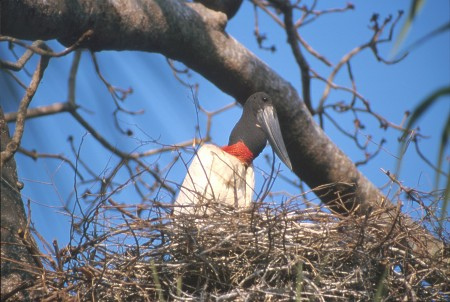
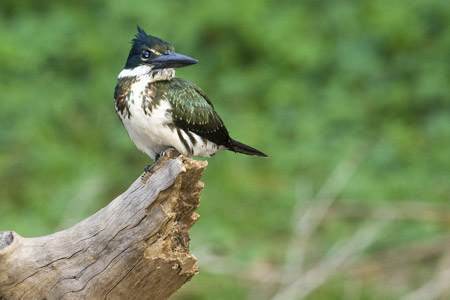
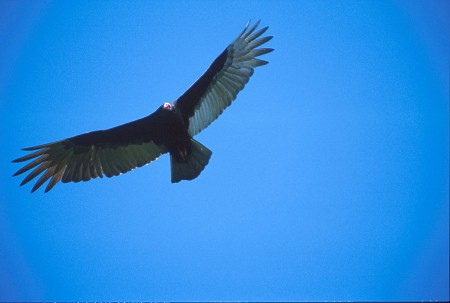


Banner image: Cocoi heron closeup (Shutterstock/Pablo Rodriguez Merkel)
Footer images: Tuiuiú, Turkey Vulture(Andrew Mercer); Amazon Kingfisher (Shutterstock/Ecoventurestravel)
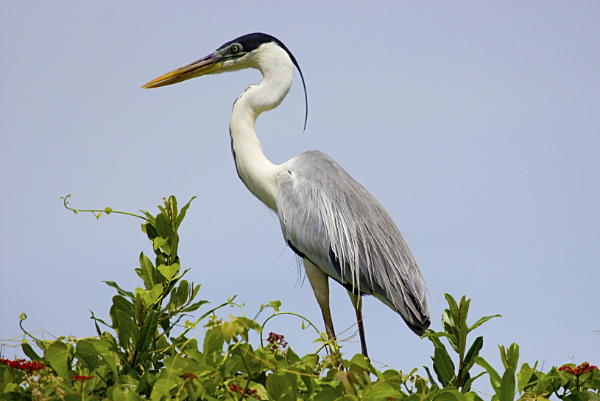
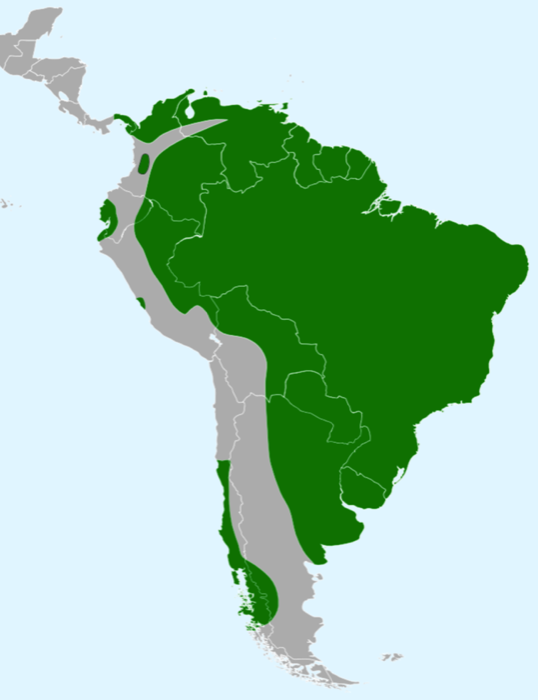
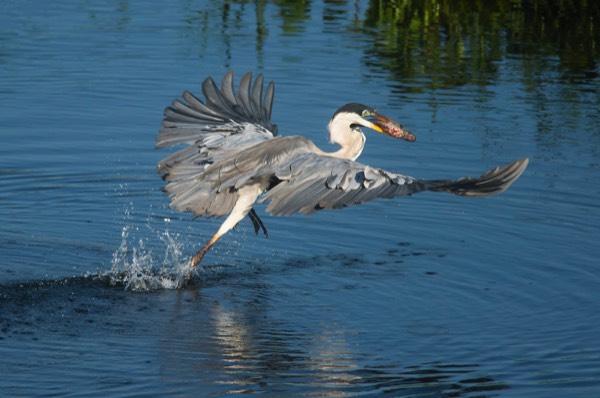
Pantanal Escapes